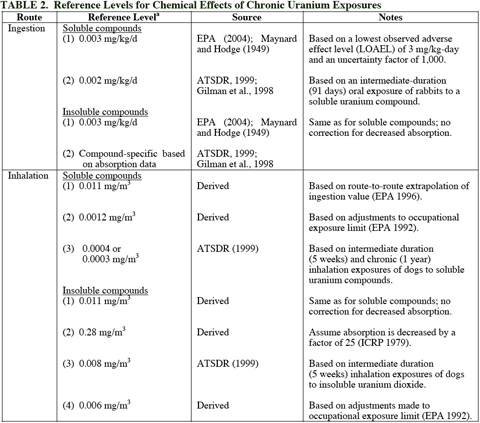|
|
|
|
|
| Available health effect criteria for acute and chronic uranium exposures are provided in Tables 1 and 2, respectively, derived from animal studies. Only limited data exist for human exposures. |
|
 |
|
| * Assumes 1-hour exposure at an inhalation rate of 1.5 m3 per hour; assuming a higher inhalation rate for a shorter exposure duration may be appropriate (ICRP 1994) and will result in lower air concentrations. A factor of 25 decrease in systemic absorption of insoluble compounds (i.e., U3O8 and UO2) was also assumed. These concentrations may not be protective against the adverse radiological effects of insoluble uranium compounds. |
|
 |
|
| * Soluble compounds include uranyl fluoride (UO2F2), uranyl nitrate hexahydrate (UO2[NO3]2- 6H2O), and uranium tetrachloride (UCl4). Some insoluble compounds are uranium metal, uranium dioxide (UO2), uranium trioxide (UO3), and triuranium octaoxide (U3O8). Uranium hexafluoride (UF6) decomposes to UO2F2 and hydrogen fluoride (HF) in the presence of moisture. Uranium tetrafluoride (UF4) is very slightly soluble. Source: ATSDR (1999). |
|
| 4 |
|
|
|
|
|
|